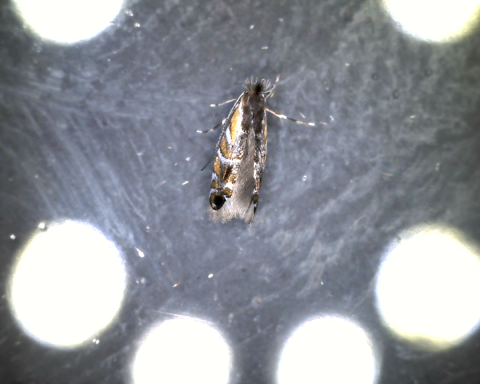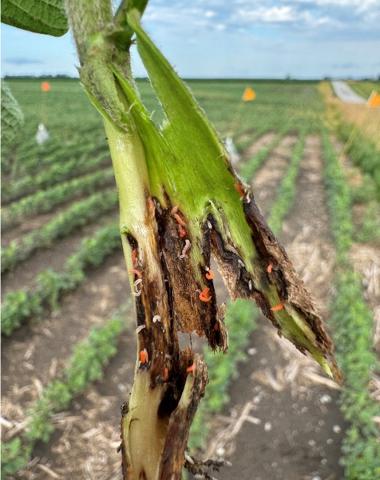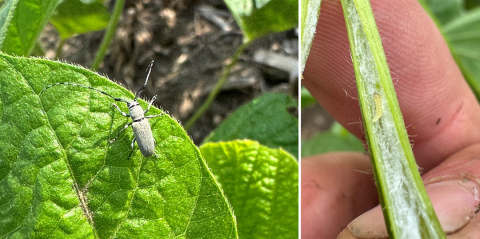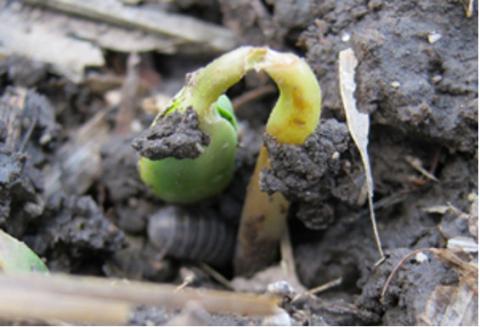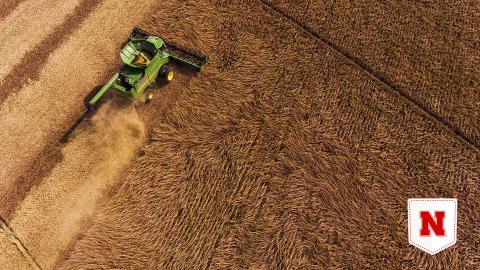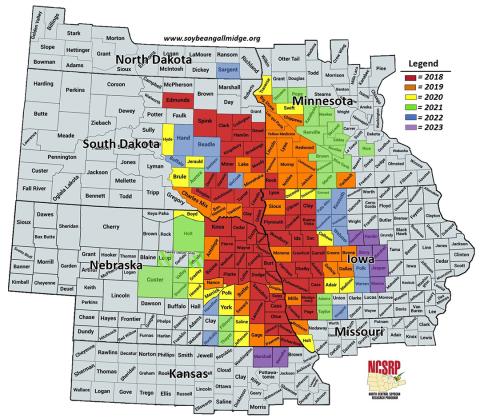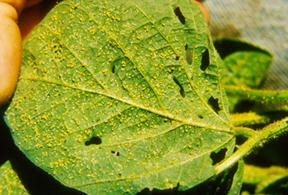Soybean Tentiform Leafminer Found in Nebraska
October 10, 2024
A new soybean pest has moved into Nebraska — the soybean tentiform leafminer was positively identified in a Madison County field last month. At present, there are no known management methods for this insect.
Insect Pest and Plant Diseases in Soybean: A Nebraska Soybean Board-funded Project
July 10, 2024
In a new study, UNL researchers are using unconventional treatments on soybean insects and diseases to investigate the relationships between certain pests and how their interactions impact crop yield.
Dectes Stem Borer in Soybean
July 10, 2024
A difficult insect to manage, soybean stem borer has expanded its reach in Nebraska. This extension article reviews considerations for scouting and control options, plus resources for producers to learn more on this crop pest.
Soybean Gall Midge Adult Activity Detected in Nebraska
June 5, 2024
Soybean gall midge has been detected recently in several locations across eastern Nebraska. This article provides information to growers on how to determine if an application is necessary.
Pillbugs Causing Injury to Soybean Crops in Nebraska
May 23, 2024
Management of pillbugs is challenging. While some insecticides and planting strategies may help control pillbug populations, producers should carefully weigh the pros and cons of each approach.
Management Technique Shows Promise Against Emerging Soybean Pest
March 29, 2024
Entomologists at the University of Nebraska are experimenting with the production technique of hilling to control soybean gall midge populations in the Midwest.
Soybean Gall Midge Detected Across Nebraska Fields
September 12, 2023
With soybean gall midge emergence dates and locations advancing in the state, Nebraska Extension educators stress the importance of scouting and documenting observations, which can inform ongoing research on management options.
Although at Low Levels, Soybean Aphids are in Nebraska
August 2, 2023
With soybean aphid infestations, it's important to preserve natural enemies under an integrated pest management approach, as well as treating only when pest populations reach economic or treatment thresholds, to let beneficial insects do their work.
